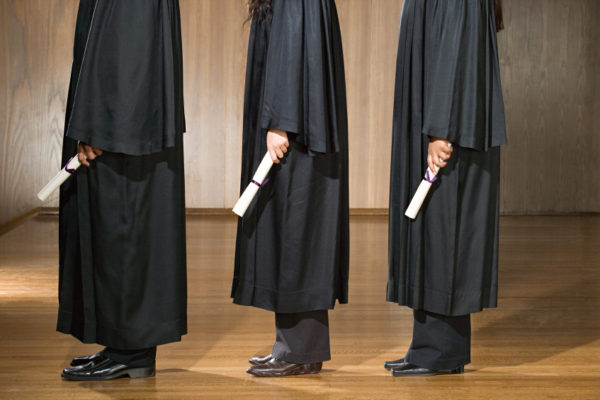Universities preach ethics. It is time they practice what they preach.
In most elite universities, Asian-Americans comprise a far higher percentage of students than is reflected in the overall population. Yet, that percentage could be higher. Recent lawsuits targeting Harvard University and Yale University illustrate this point. The lawsuits allege discrimination against highly qualified Asian-American students as institutions seek to “balance” their admissions.
Unfortunately, this problem is only going to get worse because elite institutions are playing a zero-sum game.
According to the U.S. Census Bureau, the Asian-American population went up from 10.4 million in 2000 to 18.9 million in 2017. The total average college enrollment of Asian-Americans went up from 1.1 million during 2000-2007 to 1.5 million during 2012-2015, an increase of 40 percent. In contrast, total admission to Harvard College has remained steady during this time, while the number of total applicants has doubled.
Likewise, at Stanford University, the number of those admitted has marginally declined even though the number of applicants has doubled since 2008. As the number of students from all races and ethnic groups continues to increase, the competition is expected to intensify at elite schools.
During the internet boom years in the 1990s and early 2000s, the U.S. attracted nearly 200,000 highly qualified individuals, mostly from Asia, each year under H-1B and L1 visas. Now their children are applying to colleges in large numbers. The number of international students in the U.S. has increased from about 407,000 in 1990 to 1.04 million in 2016. Of this number in 2016, about 700,000 came from Asia. They will continue to add to the Asian-American population in the U.S.
These professionals came to this country primarily because of their education. There is an obsession, in general, for high grades among these immigrant families. Scoring one point less would put them thousands of spots below in the priority list for admissions to elite schools in their home countries. That obsession is transferred to their children raised here.
Many Asian-American parents take their children to relentless prep classes, music classes, sports, cultural programs, and volunteer work on top of making them take advanced courses. There is tremendous pressure on these children; if a kid gets 99 out of 100 on math, the next question will be, “Why did you lose that one point?”
Don’t argue that elite schools don’t matter to them. Parents and students know what it means to get degrees from places that have created scientists, Nobel laureates, and great intellects. They know where the founders of Yahoo, Google, Microsoft, Facebook, Amazon and so many other companies went to school (even when they dropped out). If schools don’t matter, Princeton wouldn’t be showcasing the room where Einstein taught, and Caltech wouldn’t discuss Richard Feynman.
Today, I see a systematic attempt to discredit high GPAs and SAT/ACT scores from Asian-American students as somehow tainted and the result of “privileged” upbringing. The truth is their high scores are because they worked hard and not by virtue of legacy or political power. This bias has left many Asian-Americans red-faced despite their communities’ having championed and supported diversity in all walks of life.
These elite universities have broken the trust of hardworking Asian-American aspirants. The objective of achieving a diverse student body is essential and desirable – but the process is so opaque and insincere that it is giving rise to anger and frustration.
In some cases, universities seem to be shifting metrics from objective to subjective measures in an attempt to justify rejecting applicants. The University of Chicago says it doesn’t care about ACT/SAT scores. Just send a two-minute video, as if videos will un-bias the system. Now, young scholars have to make sure their looks appeal to the admission folks. I recollect a comment made about a prospective student’s video: “Will this student appeal to our recruiters?” Code word – not good-looking enough.
College admissions is a complex and emotion-laden topic. Leading universities must increase enrollment numbers rather than taking pride in their low admission rates. They can support diversity and academic excellence but make the admission process transparent. Universities should give additional points to those who come from difficult backgrounds but should not discount hard work, talent and motivation as somehow tainted. Admission process collectively should not become a zero-sum game.
Prabhudev Konana is a Distinguished Teaching Professor and the William H. Seay Centennial Professor of Business in the McCombs School of Business at The University of Texas at Austin.
A version of this op-ed appeared in USA Today.




